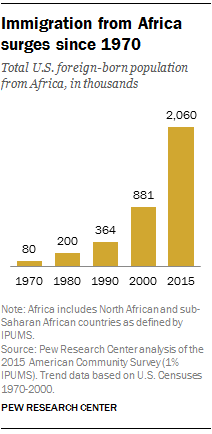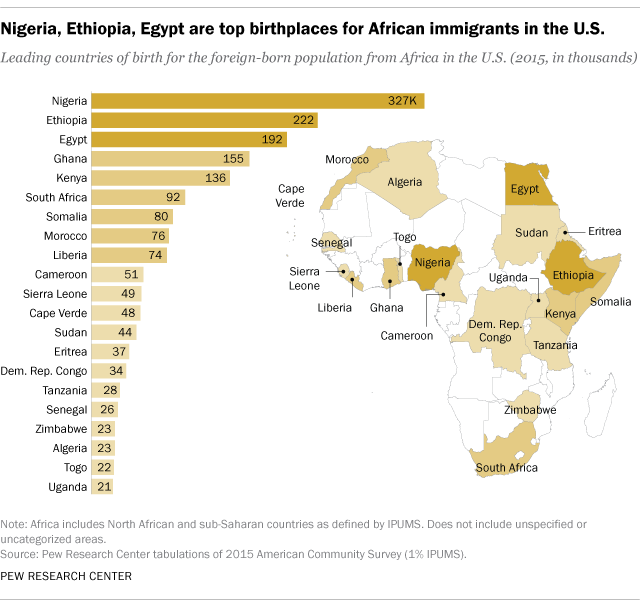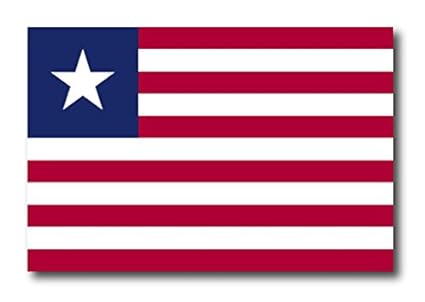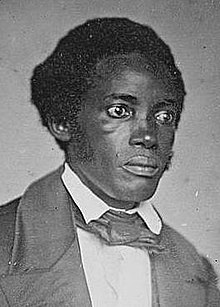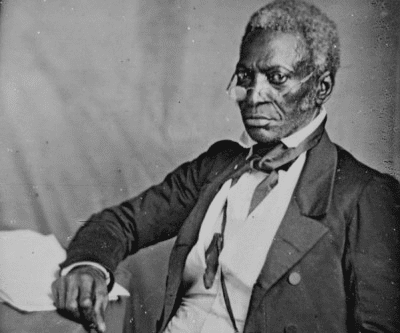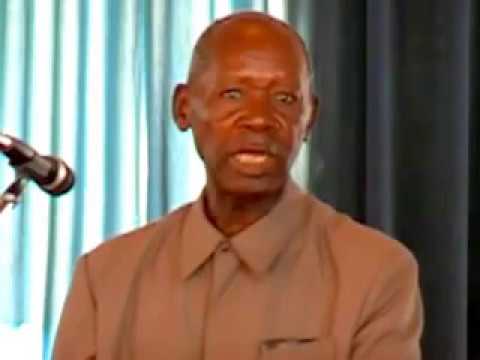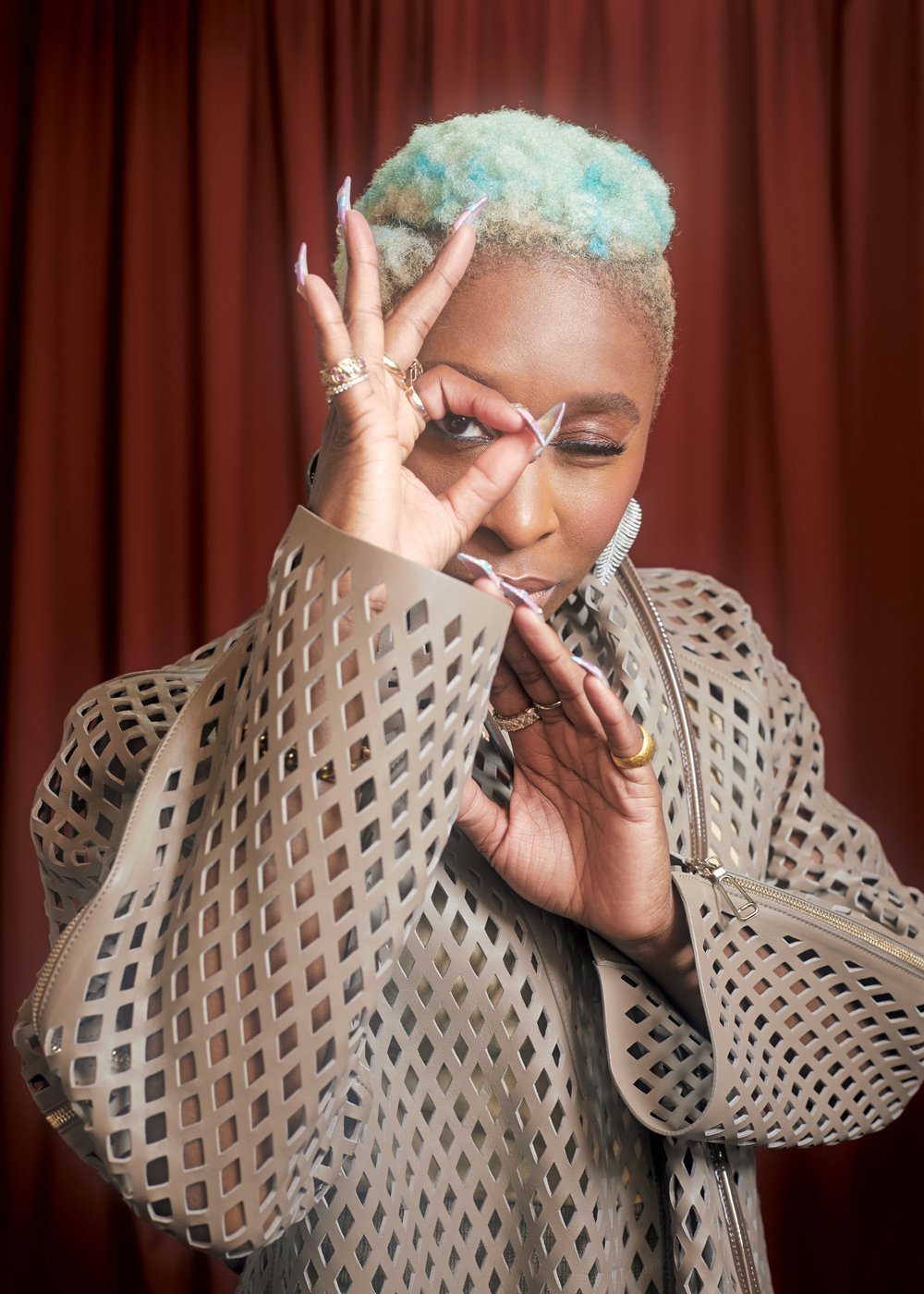Black History Month lesson for ADOS and non-ADOS suppporters. Colin Powell long, but informative.
Caribbean Migration Patterns in ADOSland 1865-present
Overview
The journey of Afro-Caribbean peoples to the United States started long ago, when enslaved Barbadians were taken by their British owners to South Carolina during the seventeenth century. Indeed, most of the earliest Africans to arrive in what would become the United States were seasoned men, women, and children from the Caribbean.
This first involuntary migration was followed by a large influx of people from the British West Indies at the turn of the twentieth century. A third wave of immigrants arrived between 1930 and 1965, and a fourth movement is still going on today. The impact of these migrations upon American society, and especially upon African America, has been profound.
Immigration from the Spanish-speaking Caribbean started later, but grew fast. In the year 2000, more than 5.4 million U.S. residents traced their national origins to Puerto Rico, Cuba, and the Dominican Republic. This figure represents more than one-fifth of the islands' populations. Large-scale population displacements have transformed daily life in the Spanish-speaking Caribbean - from family structure and religious practices to business enterprises and political ideology. They have also reshaped the physical and cultural landscape of several U.S. neighborhoods, cities, and states. In particular, Hispanic Caribbean migration has contributed to eroding the traditional dichotomy between black and white people that has been prevalent in U.S. history and continues to be important today.
Caribbeans and African Americans were brought together in Britain's North American colonies, in the South as well as in the North. Those enslaved in Barbados - many of them born in Africa;constituted an important portion of the black population of Virginia and the Chesapeake; and Barbadian interests developed South Carolina, which in the eighteenth century extended and broadened its trading relations with other Caribbean colonies. Jamaica soon surpassed Barbados as a market for Carolinian products. The degree of intercourse between the two areas was enormous, and the significant influence of the Caribbean on South Carolina endures to this day.
Well into the eighteenth century, the majority of bondspeople in the North had either lived or were born in the Caribbean.
In New York, which had the North's largest enslaved population, people from the Caribbean continued to outnumber Africans brought directly from the continent. Although those of West Indian origin gained a reputation for rebelliousness after a revolt in New York City in 1712 and although laws placed higher duties on them, the imbalance continued. One estimate puts the ratio of Caribbean to African slaves at three to one between 1715 and 1730. Of captives introduced by New Yorkers between 1715 and 1741, the largest number came from Jamaica, followed by Africa, Barbados, and Antigua.
Caribbean immigration to the United States was relatively small during the early nineteenth century but it grew significantly after the Civil War. The foreign-born black population, which was almost wholly Caribbean in origin, increased by 500 percent between 1850 and 1900, from four thousand to more than twenty thousand.
Distinguished Caribbean migrants populate the annals of nineteenth-century black America. A significant number were skilled craftsmen, scholars, teachers, preachers, and doctors.
Jan Earnst Matzeliger, the inventor of a revolutionary shoe-making machine, had emigrated from Suriname.
Edward Wilmot Blyden, a major contributor to Black Nationalism, was born in the Virgin Islands.
Joseph Sandiford Atwell, a Barbadian, became the first black man after the Civil War to be ordained in the Episcopal Church; and the famous comedian
Bert Williams was born in Antigua.
Robert Brown Elliott, U.S Congressman and Attorney General of South Carolina;
W. E. B. Du Bois; poet, songwriter, and activist
James Weldon Johnson and his brother,
John Rosamond Johnson; and poet and educator
William Stanley Braithwaite were among the most distinguished sons of these early immigrants.
By the end of the century, Cubans had established sizeable immigrant colonies in Key West, Tampa, New York City, and New Orleans, mostly as a result of political and economic turmoil in Cuba. In the mid-1880s, more than 20 percent of the émigrés were black or mulatto, many of whom worked in the cigar-making industry, especially in Key West and Ybor City, Florida.
Leaving the Caribbean
The significant growth of the Caribbean community in the United States at the turn of the twentieth century is easily explained by the increasing economic hardship and disenchantment in the British West Indies and the simultaneous expansion of the U.S. economy with its relatively high wages and growing employment opportunities.
The British Caribbean experienced a catastrophic decline in its sugar industry. The British colonies found themselves unable to compete against cane sugar from Cuba and Brazil and against sugar beets produced in Europe. Between 1840 and 1900 the price of Jamaican sugar dropped almost 80 percent. The number of sugar estates on the island fell from 670 in 1836 to just 74 by 1910, drastically reducing the number of workers employed in the industry. Though banana cultivation expanded rapidly, it could never make up for the shortfall created by the collapse of the sugar economy.
Barbados's ruling class managed to break the fall of King Sugar on that island, but it did so on the backs of black Barbadians by instituting a mercilessly exploitative system. A similar dynamic enfolded in Saint Kitts, Nevis, Montserrat, and Antigua. The death rate, especially infant mortality, soared on these islands. Malnutrition was commonplace and outright starvation was not unknown. As one petitioner to the British government put it in 1899, "Her Majesty's black and colored subjects in the West Indies have had to choose between a death from starvation in their native islands and suffering ill-treatment as immigrants in the Dominican Republic because their native islands are merely Islands of Death."
The gravity of the situation was compounded by a series of natural disasters that contributed to emigration. Hurricanes, floods, and droughts afflicted the islands with unusual frequency and intensity between 1880 and 1920. The structure and oppressiveness of colonial rule on the islands took its toll not only on the workers and peasants but also on the aspiring black middle class. They became increasingly dissatisfied. Black teachers received meager salaries and no pensions at the end of their careers. Those few who made it into the civil service were locked down in low-level jobs, well below their capabilities. To make matters worse, in 1911 the Jamaican authorities decided to scrap competitive civil service examinations. They were replaced by an undemocratic appointment system that favored the whites and the light-skinned. There were strong and loud objections, but they were ignored.
Coming to the United States
The stream of migrants to the United States was relatively small compared with the flow to Central America and Cuba. While 108,000 people entered the United States from the entire Caribbean region between 1899 and 1932, it took only two islands, Jamaica and Barbados, to supply more than 240,000 laborers to Panama between 1881 and 1915. The migration to the U.S. was also distinct in another important respect. Those who immigrated to this country were disproportionately literate and skilled, with a significant number being professionals or white-collar workers.
The number of black people, especially those from the Caribbean, who migrated to the United States increased dramatically during the first three decades of the twentieth century, peaking in 1924 at 12,250 per year and falling off during the Depression. The foreign-born black population increased from 20,000 in 1900 to almost 100,000 by 1930. Over 140,000 black immigrants passed through United States ports between 1899 and 1937, despite the restrictive immigration laws enacted in 1917, 1921, and 1924.
The wave of black humanity entering the United States was focused on the northeastern coast and broke mainly on the shores of Manhattan. Tens of thousands came through Ellis Island, though the voluminous literature on that legendary port of disembarkation takes scant notice of this fact.
From the end of the nineteenth century up to 1905, South Florida was the migrants' primary destination. There was a large wave of migration from the Bahamas and a smaller flow of black cigar-makers from Cuba. New York was the second most popular state for settlement, followed closely by Massachusetts.
But Florida's preeminence was soon surmounted by that of New York, and the number headed for Massachusetts dropped sharply by 1920. During the peak years of migration, 1913 to 1924, the majority made their way to New York City, settling primarily in Manhattan and Brooklyn. By 1930, almost a quarter of black Harlem was of Caribbean origin. Less than a decade later, the New York
Amsterdam News informed its readers that, with the exception of Kingston, Jamaica, Harlem was the largest West Indian city in the world.
The first cohort of twentieth-century Caribbean immigrants to the United States was not only more literate and skilled than their compatriots left behind but also more educated and skilled than the European immigrants who entered the country at the same time. Moreover, they were more literate than the native-born white population in the United States.
It was this wave that laid the groundwork for the institutional infrastructure of Afro-Caribbean life in New York City and elsewhere in the nation. It has been estimated that by the 1930s a third of New York's black professionals—including doctors, dentists, and lawyers;came from the ranks of Caribbean migrants, a figure well in excess of the group's share of the city's black population. Furthermore, the Caribbean newcomers accounted for a disproportionately large number of New York's black businesspeople.
Civil society in the Afro-Caribbean community was vibrant and well developed. Immigrants established a plethora of social, political, and economic organizations: churches, church groups, rotating credit clubs, political clubs, alumni associations, benevolent associations, and social and sports clubs. Among the immigrants who made a lasting contribution was "Arthur" Alfonso Schomburg who had settled in New York in 1891. He was active in black nationalist causes and amassed books and other materials on Africa and its Diaspora that formed the basis of the collections of the Schomburg Center for Research in Black Culture.
A study of the entries in
Who's Who in Colored America, covering the period from 1915 to 1932, yields a remarkable number of black migrants.
In 1930, although only 0.8 percent of America's black population was foreign-born, 6 percent of those listed in the book were immigrants. Over 8 percent of doctors, 4.5 percent of lawyers, more than 14 percent of businessmen, 4.5 percent of clergymen, over 3 percent of professors, and 4 percent of writers/authors had come from the Caribbean.
Among the sons and daughters of this generation of Caribbean migrants is a phalanx of distinguished African Americans: activists and religious leaders
Malcolm X and
Louis Farrakhan; actors
Harry Belafonte and
Cicely Tyson;
General Colin Powell; writers
Margaret Walker,
Audre Lorde,
Michelle Wallace,
Paule Marshall,
Rosa Guy, and
June Jordan; scholar
St. Clair Drake; Congresswoman
Shirley Chisholm; basketball star
Kareem Abdul-Jabbar; and musician
Sonny Rollins.
Some islanders relocated in the U.S. mainland, especially after 1917, when Congress granted U.S. citizenship to Puerto Ricans. The U.S. armed forces recruited nearly 17,000 during World War I, some of whom remained in New York after the war. Many went back to the island during the Great Depression of the 1930s.
During the first two decades of the twentieth century, thousands of skilled Puerto Rican workers, especially cigar makers, arrived in the United States. Among them were labor leaders Bernardo Vega and Jesús Colón, and anarchist and feminist Luisa Capetillo. Most of the migrants traveled aboard passenger steamboats such as the
Marine Tiger, the
Borinquen, and the
Coamo. Their main destination was New York City, the U.S. port with the best transportation links with San Juan since the nineteenth century. Also, the city offered abundant employment opportunities in its expanding manufacturing and service industries.
Shutting the Door
The second decade of the twentieth century, by contrast, would see a deliberate attempt to block the entry of black people into the United States. Despite the dramatic fall in immigration following the outbreak of World War I, by the end of 1914 Congress was debating legislation that would drastically restrict newcomers. Senator James Reed of Missouri secured quick passage in the Senate of an amendment to the bill excluding members of the black or African race from entry into the country. The African-American press was unanimous in its condemnation of the measure, and the National Association for the Advancement of the Colored People voiced its strong opposition.
But, remarkably, the greatest opposition to this piece of legislative racism came from Booker T. Washington. He was uncharacteristically passionate and combative on the question and, to his credit, pulled out all the stops to kill the amendment. He mobilized his influential network of powerful supporters, white and black—the "Tuskegee Machine" - and personally waged a campaign in the major newspapers against the measure. Washington vigorously reminded Americans of the indispensable labor that Afro-Caribbeans had performed in building the Panama Canal. They should not now be slapped in the face, he said, and told they cannot enter this country. He organized a massive lobbying campaign and even black opponents of his usually accomodationist positions, such as W. E. B. Du Bois and cofounder of the NAACP and newspaper editor William Monroe Trotter, joined forces with him on this issue.
The Immigration Act of 1924 drastically turned the tide of Caribbean immigration to the United States. It plummeted from 10,630 in 1924 to only 321 in 1925. Primarily aimed at restricting nonwhite and Southern and Eastern European immigration, the law stipulated an immigration quota system of 2 percent of the foreign-born for each nationality enumerated in the 1890 census.
Northwestern Europe was favored in this system, while those from the European colonies could only enter under the designated quota allotted to their colonial masters. Thus those from the British Caribbean entered under the British quota set at 34,007 in 1925. Remarkably, although Britain consistently underused its quota by several thousands, the Caribbean migration was kept low, never rising in the late 1920s and 1930s to the levels reached before the 1924 legislation.
During the Depression, more Caribbean people returned to the islands than entered the United States, owing to economic hardship and an even more restrictive immigration policy. Despite all this, the black population of foreign origin and their American-born offspring grew from 55,000 in 1900 to 178,000 in 1930. Migrants from the islands, together with those of Caribbean origin coming from Central America, made up over 80 percent of the total.
New Waves
The level of Caribbean immigration picked up after the United States entered World War II in 1941. Almost 50,000 Caribbeans (black and white) settled in the country between 1941 and 1950. They took advantage of the rapidly expanding war economy and postwar economic growth.
Beginning in 1943, thousands of migrant workers were brought from the region to work in American agriculture and thus help the war effort. Florida's sugar plantations were their primary destinations, but they were soon dispersed to other states and sectors of the American economy.
By war's end, over 40,000 workers from the Bahamas, Jamaica, Barbados, Saint Vincent, Saint Lucia, and Dominica were working in the United States. They labored in nearly 1,500 localities in thirty-six states. Some 16,000 worked in industrial occupations. For some, especially those in Florida, conditions were intolerable. Many ignored the no strike clause in their contracts and engaged in other forms of open resistance, sometimes with success. Others broke their contracts and fled from their assigned jobs.
Jamaican tobacco workers in Connecticut took flight to New York and Boston rather than return to their native land after their contracts expired in 1950. Others were able to transform their status from migrant worker to immigrant and remain legally in the country. Many, however, returned to the Caribbean and then made their way back to this country as bona fide immigrants, rather than contract laborers.
Though originally intended to alleviate the alleged wartime labor shortage in Florida agriculture, the Caribbean program continues to this day. In 1989 some 14,000 Caribbean migrant workers were employed on American farms
Between 1917 and 1944, Puerto Ricans settled primarily in a few New York neighborhoods, such as East Harlem, Chelsea, the Lower East Side and West Side of Manhattan, and the Brooklyn Navy Yard. By the 1930s, the immigrants strongly concentrated in East Harlem, especially between 97th and 116th Streets, which became known as Spanish Harlem or simply
El Barrio.
Many Puerto Rican communities developed alongside African-American neighborhoods such as Harlem or Bedford-Stuyvesant in Brooklyn. These early settlements were relatively small and compact; were well integrated with other Spanish-speaking immigrants, especially Cubans and Spaniards; and were not considered a "social problem."
In the 1940s, two-thirds of the Puerto Rican immigrants were classified as white and one-third as black or mulatto. From New York, Puerto Ricans spread out to New Jersey, Connecticut, and Pennsylvania, especially those who worked in seasonal agriculture. About 90,000 Puerto Ricans moved to the continental United States between 1898 and 1944.
The third stage of Puerto Rican migration, often dubbed the Great Migration, took place between 1945 and 1964. The island's agricultural economy, particularly in sugar, coffee, and tobacco, declined sharply, especially after1930. After World War II, the island's industrialization program, Operation Bootstrap, displaced many rural workers to urban areas. Especially hard-hit was the central mountainous region, which experienced large population losses. Lack of sufficient jobs on the island, combined with a growing demand for cheap labor in the mainland, produced the first massive exodus in the 1940s and 1950s. More than half a million islanders moved abroad. About 21,000 traveled to the mainland every year as migrant farm laborers. Several Puerto Rican communities, such as those in Camden, New Jersey; Springfield, Massachusetts; or Hartford, Connecticut, began as small clusters of former contract workers.
The postwar flow of Caribbean immigrants suffered a major setback with the passage in 1952 of the Immigration and Nationality Act, also known as the McCarran-Walter Act. While allowing drastically reduced numbers of Caribbean farm workers to enter the U.S., the bill closed the door to virtually every other would-be black immigrant.
The law had the desired effect of retarding the rate of Caribbean immigration to the U.S. Thousands still came, but they were overwhelmingly the close relatives of people already living in this country, rather than new immigrants as such. The migration stream was now diverted to Britain, which was to receive approximately 300,000 Caribbean immigrants between 1948 and 1966.
In 1964 Lyndon Johnson was elected president in a landslide; the Democrats took control of both houses of Congress. As a senator from Texas, Johnson had voted for the McCarran-Walter Act, but as president he made good on his campaign promise to continue John F. Kennedy's efforts to reform the immigration laws. Johnson linked the civil rights Act of 1964 and the Voting Rights Act of 1965 to a new and more equitable immigration policy.
The new liberalized immigration law, commonly known as the Hart-Celler Act, was passed in September 1965 and went into full effect on July 1, 1968. It launched a new wave of immigration from the Caribbean. For those who sought better opportunities abroad, it was especially welcomed, because beginning in 1962, Great Britain began to systematically block the entry of Caribbean immigrants. They now headed north to America. From 123,000 in the 1950s, the number of Caribbean immigrants grew to 470,000 for the 1960s, including the massive flow of those leaving Cuba.
For Jamaica alone, the number jumped more than eightfold over the period, from less than 9,000 to just under 75,000. Between 1971 and 1980, the Jamaican figure, at almost 140,000, was almost double that of the previous decade. And between 1981 and 1990 a further 208,000 people made their way to the United States among the 872,000 from the Caribbean as a whole.
A growing "revolving-door migration" has characterized the fourth period of Puerto-Rican immigration between 1965 and the present. For the first time since the 1930s, more people went back to the island than left for the United States during several years in the 1970s. Net migration to the mainland reached a historic low since the beginning of the century. Among the main causes of return migration were deteriorated living conditions and employment opportunities in cities like New York, Chicago, and Philadelphia, particularly in manufacturing. As a result, the movement of first- and second-generation Puerto Ricans to the island has taken massive proportions. The 2000 census found that more than 6 percent of Puerto Rico's population was born in the United States and that more than 3 percent had lived there in 1995. The presence of hundreds of thousands of Puerto Ricans who were raised abroad and speak English as their first language has raised important issues about the island's cultural identity, notably the role of the Spanish language as a symbol of that identity.
A large Cuban migration, from Mariel harbor to Key West, Florida, took place between April 21 and September 26, 1980. The Mariel boatlift partly resulted from the visits of more than 100,000 exiles to Cuba in 1979, which renewed social contacts with relatives and familiarized them with economic opportunities in the United States. The immediate cause of the exodus was the takeover of the Peruvian Embassy in Havana by more than 10,800 Cubans who wanted to migrate. The Cuban government opened the port of Mariel, near Havana, for those who could be picked up by relatives living abroad. Thus began what became known as the "Freedom Flotilla" in the United States. When the exiles arrived in Mariel aboard private boats and ships, Cuban officials forced them to take unrelated persons, some of whom had been inmates at prisons or mental hospitals. The boatlift ended abruptly when Castro closed the harbor for further emigration.
More than 125,000 Cubans arrived in Key West during the exodus. Most of the
marielitos (as they were pejoratively labeled) were young, single males; and had a working-class background and an elementary education.
Approximately 22 percent classified themselves as black or "other" (most likely mulattos), compared to only 9 percent of the Cubans who arrived between 1960 and 1964. Contrary to media reports, less than 2 percent of the
marielitos were serious criminals, although about 19 percent had been in jail for various reasons, including political dissidence. Thus, the socioeconomic profile of the Mariel exodus differed significantly from that of previous refugee waves, especially during the early 1960s. The 1980 boatlift deepened the rifts between "old" and "new" Cubans in Miami, where most of the latter settled.
The first stage of large-scale Dominican migration began shortly after Trujillo's assassination in 1961, especially following the coup d'état against constitutional President Juan Bosch (1963) and the civil war and U.S. military occupation of Santo Domingo (1965). These political events unleashed complex socioeconomic forces leading hundreds of thousands of Dominicans to move abroad over the past four decades. As a result, Dominican migration to the United States multiplied tenfold between the 1950s and 1960s. The outflow continued rising in the 1970s and 1980s, reaching unprecedented levels in the 1990s. As the exodus grew, it became more representative of the sending population, including blacks and mulattos, as well as members of the lower classes.
By 1990, more than 25 percent of the Dominicans in New York City said they were black, while 24 percent considered themselves white and 50 percent described their race as "other."
During the 1980s, the economic crisis in the Dominican Republic increased the number of migrants of various social classes. Growing unemployment and underemployment; the rising cost of living; a chaotic transportation system; and the near-collapse in the provision of basic public services, such as electricity, running water, housing, health, and education were powerful incentives to move abroad. On one hand, one out of four migrants held relatively skilled and well-paid jobs in the Dominican Republic, for example as professionals, technicians, managers, and administrators. Others worked in middle-level positions as sales and administrative support personnel. On the other hand, more than half was employed in low-skilled and low-paying occupations, particularly as operators, fabricators, laborers, and service workers. The small proportion of agricultural workers indicates that most were not rural dwellers. Thus, contemporary Dominican migration draws primarily on the urban working classes, not the middle class or the peasantry.
When asked why they left their country, many Dominicans reply, "searching for a better life. The basic economic incentive for the large-scale displacement of Dominicans to the United States is the wide gulf in the wage levels of the two countries - especially since the early 1980s, with the constant devaluation of the Dominican
peso vis-à-vis the U.S. dollar.
Given U.S. restrictions on immigrant visas, many were forced to travel illegally on unseaworthy boats, known as
yolas, across the Mona Channel to Puerto Rico. Between 1982 and 2004, the U.S. Coast Guard intercepted 24,413 undocumented Dominicans at sea.
Reception and Adaptation
Each generation of Caribbean immigrants has expressed shock at encountering American racism. And it frequently led to their radicalization. Many have figured prominently in radical and dissenting movements. Their political and social activism and their fight against racism were one reason why the Immigration Act of 1924 practically prohibited their immigration to the United States. Jamaican-born Marcus Garvey, who launched the largest black movement in history, the Universal Negro Improvement Association, was dubbed the "negro agitator" by the Federal Bureau of Investigation, and was prosecuted for fraud and deported.
In 1900 Florida had the highest concentration of black immigrants, just under 22 percent of them. New York State followed with 17.3 percent, and Massachusetts with 17 percent. But by 1910 the process of concentration had begun, with New York leading the way with almost one-third (32 percent) of black immigrants. In 1920 more than 43 percent of black immigrants lived there, rising to 59 percent by 1930 and over 61 percent a decade later. New York appears to have served as a magnet for those who had previously resided in other states. It was in the 1920s that New York became a preeminent destination for Caribbean immigrants, a position it would maintain for more than half a century.
New York's rapid preeminence, though multifaceted, is not hard to explain: improved and cheaper transportation from the Caribbean to the city, accompanied by extensive advertising in the islands. News reports on immigrant life in the United States abounded. (The Jamaica Times was especially attentive to this subject.) One immigrant writing in Harlem's Amsterdam News in the 1930s went so far as to claim, "Seventh and Lenox Avenues were as well known to people in Kingston, Jamaica; Bridgetown, Barbados; Port-of-Spain, Trinidad; and other West Indian capitals, as to the people of Brooklyn. Everybody wanted to get to New York."
For decades, the three immigrant groups from the Spanish-speaking Caribbean have clustered in the northeastern and southeastern United States. According to the 2000 census, more than two-thirds of all U.S. Cubans lived in Florida, whereas almost three-fifths of the Dominicans and nearly one-third of the Puerto Ricans lived in the state of New York (table 4). Puerto Ricans are more widely scattered than Cubans and Dominicans, who cluster in a single state. All three groups have substantial concentrations in New Jersey and, although the table does not show the figures, in Puerto Rico as well. (The 2000 census enumerated 19,021 Cuban-born persons and 61,455 Dominican-born persons in Puerto Rico). The clustering of Cubans in Florida and Dominicans in New York means that, for these groups, moving abroad is practically synonymous with moving to these two states. For Puerto Ricans, migrating to the mainland means increasingly to relocate away from New York, particularly in Florida, New Jersey, Pennsylvania, and Massachusetts.
The reception, perception, reaction, and adaptation of Caribbean immigrants have undergone changes, but there has also been remarkable continuity.
One of the constants is the perception of the immigrants, because of their skin color, as black first and foremost. This placed them in the same category as African Americans and made them subject to the same disadvantages: the racial discrimination and violence, especially in the South, and routine humiliation in daily life. There were, however, bizarre exceptions, especially in the Jim Crow South.
Greeted with the words "What you damned ******* want here?" the Trinidadian airman Hubert Julian and the other members of his group were, in the end, treated royally at a Texas gas station in 1931. They had passed themselves off as Ethiopians.
The teenaged Sidney Poitier was dealt with indulgently by the racist Miami police, once they realized he was a black foreigner. But in 1963, at a drive-in hamburger joint near Fort Benning, Georgia, a black Vietnam veteran and army officer was quizzed by the waitress: "Are you Puerto Rican?" "Are you an African student?" Colin Powell answered, "I'm a Negro. I'm an American. And I'm an Army officer." He was refused service and sent to the Jim Crow window at the back of the restaurant.
But their nationality, especially in the South, could also bring special negative attention to Caribbean immigrants. In Miami, the authorities branded them as troublemakers. In the 1920s, the Ku Klux Klan targeted Caribbean immigrants, especially the supporters of Marcus Garvey's UNIA.
The immigrants' relations with African Americans have drawn much attention. In general, the tensions have been overstated at the expense of the genuine collaboration that also existed. There was definite tension, especially during the "Garvey Must Go" campaign of 1922-23; and tensions between these two elements of the African Diaspora still exist.
But there has also been a remarkable level of collaboration and cooperation between them. African Americans and Afro-Caribbeans married one another, shared their cultures (including cuisine, music, and sartorial tastes), learned to live with one another, and joined forces in the various political movements to fight racist and class oppression.
The postwar wave of immigration brought strain, but then collaboration emerged once again, especially during the civil rights struggle.
Change and Continuity
With the exception of Cubans, Caribbean immigrants have made New York State and New York City their principal destinations and sites of settlement in the U.S. Florida, especially over the last two decades, has grown increasingly popular among Haitian and Jamaican immigrants, however.
Nevertheless, more than half of Barbadian, Guyanese, Haitian, Jamaican, and Trinidadian immigrants have settled in New York, especially Brooklyn and Queens. The proportion is even higher for those from the Dominican Republic: three-quarters of them live in New York City.
The preponderance of females among Caribbean immigrants dates back to 1918. Given the postwar preference for female immigrant workers, especially nurses and domestics, Caribbean women have frequently found it easier to obtain American visas than their male counterparts. In many instances this has strengthened the hand of Caribbean women in the domestic sphere, since they are now in a position to sponsor the immigration of their spouses and children.
The evidence suggests that, at least since 1960, the proportion of professionals among Caribbean immigrants has declined overall. Between 1962 and 1964, 23 percent of Jamaican immigrants were professional and technical workers. By contrast, those who came to the U.S. between 1975 and 1979 had only 14 percent in these categories. It is not surprising because those immigrating as relatives of citizens or permanent residents have increased at a much faster rate than those immigrating under the preference scheme in use for professionals.
Today, there are between 2.6 and 3 million Caribbeans (of all races) in the United States, or 1 percent of the total population. More than 72 percent of Afro-Caribbeans are foreign-born and they represent 4.6 percent of the black population. Entrepreneurs continue to flourish in the community, and the 2000 census shows that the median household income of Afro-Caribbeans is $40,000. Although it has decreased since 1990 it is still higher than the African-American median household income but is now lower than the African immigrants' income.
From the early days of Caribbean immigration, West Indian music, including soca, calypso, and reggae, has had a profound impact on popular music. Other aspects of Caribbean culture such as food and Carnival have also entered mainstream America.
In the last two decades, Carnival, which started in Harlem in 1950, has become a regional event. The first celebration takes place in Atlanta on Memorial Day weekend, and over the next five months events are held in several cities. The largest one, which takes place in Brooklyn, New York, on Labor Day, draws two or three million revelers and spectators. These spectacular public events, which generate millions of dollars in revenue, are the clearest expression of the development of strong Caribbean communities and a defined Afro-Caribbean identity.
http://www.inmotionaame.org/print.cfm?migration=10